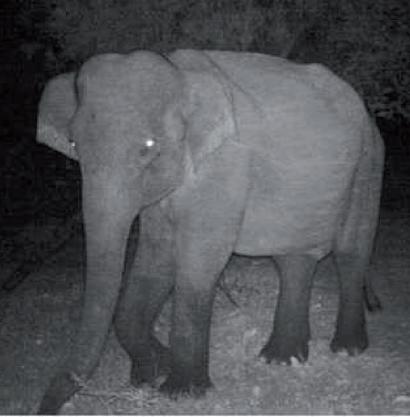Deegoda Gamage Ashoka Ranjeewa
Other projects
25 Nov 2013
The Enigmatic Crop Raiders of Udawalawe: A First Step Towards Mitigating Human Elephant Conflict (HEC) in Sri Lanka I
Identify and compare effectiveness of the park fence and private electric fences, study fence breaking and crop raiding behaviour of the elephants & raise awareness among the youth.

This project will focus on Pokunuthanna which is one of the villages bordering the Udawalawe National Park (UWNP) Sri Lanka and is facing severe Human Elephant Conflict (HEC). Elephants break the park electric fence constantly, raid crops, damage properties and human lives of the villagers daily. On the other hand, villagers also harm elephants in the process of protecting their farms and properties. A novel trend of erecting locally made private electric fences to protect home gardens was observed among some villagers. Humans and elephants in the villages bordering the park are struggling to survive. Thus, the primary goal of this project is to develop a co-existence model which ameliorates conflict between the villagers and the elephants.
With the support of first Rufford small grant, I identified 35 problem male elephants that come out to the villages using infra-red night vision camera traps during 2013 - 2014. During the second phase of the project, I will study effectiveness of electric fence of the park and the private electric fences of the villagers by measuring Voltages and recording damages to the fences by elephants. I will also compare effectiveness of fences located on the ecological boundaries and administrative boundaries of DWC. Apart from that, while continuing elephant identification, I will study crop raiding behaviour of elephants in an experimental paddy land during the night. Furthermore, I will form a Young Conservationist Society to raise awareness among the youth in the village and encourage them participating in wildlife conservation in the area.
Finding causes of ineffectiveness of the park fence will enable authorities to make the fence more efficient and finding the effectiveness of the private electric fences will provide an alternative solution to HEC mitigation. Determining of the effectiveness and the hazards of the private electric fences will provide opportunity to develop a community based approach which will be more cost-effective and make the community self-sufficient in mitigating HEC. Identification of problem elephants, updating the available photo catalogue of them and studying their behaviour will provide useful information in elephant conservation in the country. The photo catalogue will help managers to target the problem animals accurately to implement individual based management actions without involving the whole population. Establishment of the Young Conservationists’ Society will encourage locals to foster pride in local natural heritage and to inspire young conservationists in the future.